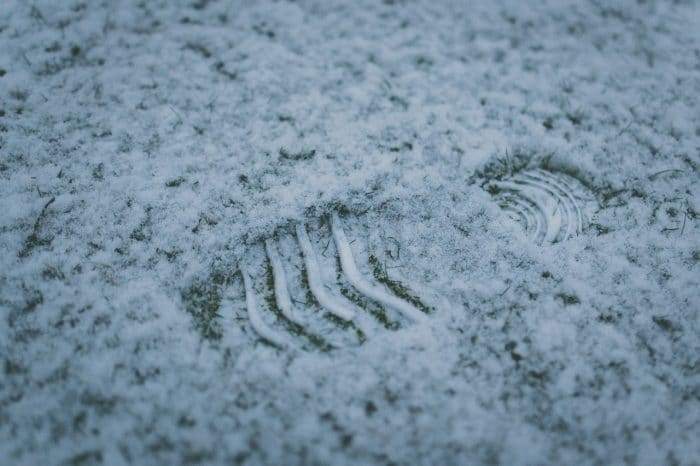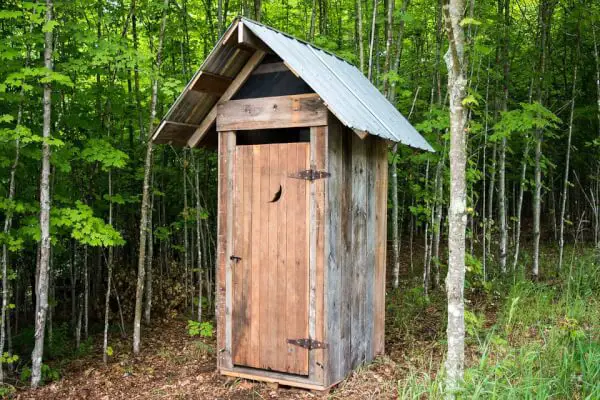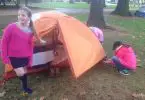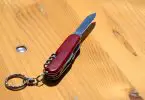Have you ever wondered how to build a camping bathroom? Especially one that gives you peace of mind knowing that you won’t be leaving behind trash? It is, in fact, much easier than you think, even if this is your first time heading out on the trail.
If you’re a seasoned hiker, hopefully this can provide a new way to construct your bathroom on the go. Each step in this article will walk you through the process. What’s more, we will provide modifications for day hikers, overnighters, and multi-day hikers.
Do Your Research
Before you even pack your bags, you need to spend time researching your route and campsite. Which trail are you taking? Where will you be aiming to camp? Different trails, national parks, and campsites have different rules about bathroom etiquette.
In some places, you will need to carry out everything you bring into the space – including human waste. In other campsites that have bodies of water nearby, you will need to make sure no buried refuse comes within 200 feet (about 61 meters) of the water, for obvious sanitary reasons.
See also: LNT Principles: A Backpacker’s Guide to Leaving No Trace
How will you get there? If you are driving to the trailhead and camping not too far away (or if you are okay carrying a little extra weight on your hike), you might be able to get away with bringing in gear to construct your own backpacking toilet at your campsite. If you aren’t keen on having that extra weight banging around, there are some lighter weight options for designing the perfect camp bathroom experience below.
What is Leave-No-Trace Camping?
This style of hiking/camping puts forth a set of principles for its followers to ‘leave no trace’ behind you at your campsite, or on the trail. Another way to think about it is to leave every place you find yourself in better than you found it.

While this post will not attempt to sway you to follow these principles, it is worth noting that this style of camping/hiking is the most environmentally friendly way to interact with nature. It is quite widespread, as well. Most campsites and trails will ask you to at least abide by one of the seven principles: taking everything out that you have brought in with you.
If you are planning to camp/hike and abide by these principles, the ones most pertinent to you will be those dealing with planning ahead (see above re: understanding the rules of your chosen site) and disposing of waste properly.
How Long Are You Staying?
The length of time you are planning to spend in the great outdoors will directly affect the type of camp bathroom you will want to construct. For organization purposes, we will separate hike length into three categories: those doing day hikes (in and out in the same day), overnight camps, and multi-day (2+ days) camps, as your needs will differ.
What Materials Do You Need?
First, it’s helpful to think about all essential functions performed in the bathroom when thinking about what materials you will need. The most basic functions are relieving oneself and subsequent hand washing. If you want to go further, you have showering, drying off, shaving, changing sanitary items (ladies), and brushing your teeth.
Depending on the length of your stay at the campsite and/or on the trail, other scheduled stops you may have, and then how much you are willing to carry on your back.
Day Hikers
If you are planning to wake up in your own bed and go to sleep in your own bed with hiking sprinkled between, you will arguably need the least amount of gear. Thinking back to our basic list of what we use bathrooms for, you should only need it for its most basic functions – relieving yourself and washing up. In this case, you have two options. If your chosen site doesn’t have strict regulations on burying solid waste, you will need:
A Trowel
A trowel made of any material will do (though you will notice the majority come in either think plastic or metal). They do make trowels specifically for digging catholes of this nature, but if you have a trowel you use for gardening and you don’t feel like shelling out for a new one, that ought to work fine.
As long as it’s got a pointed tip, you should be able to penetrate most soil types.
A Measuring Tape
This may sound silly, but unless you have superior estimating skills, you will need this both to measure your distance from any bodies of water close by. Additionally, you will need to measure the depth of your cathole to ensure it is at least six inches deep.
Clean water
Consider reserving some of the drinking water you are carrying with you to rinse off your hands before touching any sensitive area on your body. This is true for everyone who is wiping after relieving themselves, as well as for women who are changing their menstrual products (whether they’re reusable or disposable).
If you are using a reusable product (such as a Sea Sponge or reusable pad) you will need ample clean water to rinse these products before reinsertion.
Hand sanitizer
It can do in a pinch when you aren’t around a faucet with running water or if you have run out of clean water. It is also a little bit easier than carrying around a bar of soap hoping you will stumble across a faucet. You should always wait until it dries before touching sensitive areas. Keep in mind that you should not use hand sanitizer to clean menstrual products.
Biodegradable soap
If you have access to clean water (either filtered from a natural freshwater source or brought in with you), give your hands a good washing. You can cut bar soap into single-use flakes, or bring a travel-sized bottle of eco-friendly soap (glycerin, non-perfumed soaps work best, and can be found in most pharmacies, bigger grocery stores, and organic health-food stores, as well as other outdoor retailers). Cutting it into flakes reduces the weight and space it takes up in your pack.
Toilet paper/sanitizing wipes
Certain companies that specialize in outdoor products sell travel-sized toilet paper. These toilet paper sheets come in a lightweight plastic holder. Alternatively, bringing a roll of toilet paper from the house is a good option, too!
Additionally, there are toilet wipes out there that can double as toilet paper and as sanitizing hand wipes for after you’ve done your business (please don’t use the same wipe for both purposes – this just means you can buy one pack of multi-purpose wipes, instead of one for your hands and one for your bum). Check out our review of the top biodegradable toilet paper to help you with more choices.
Keep in mind that while this might seem like the most efficient option, you should still plan to pack out any paper products you bring with you (even if they advertise themselves as being biodegradable).
Sealable, water-resistant bags
These are a must, since you will need to pack out any paper products, as well as used, disposable tampons and/or pads and their wrappings. As you most likely will not want them to mix with other things in your pack, these bags will do the trick.
Anything ranging from your usual Ziploc (opt for the quart or gallon size to cut down on using too many bags, but you will need to double up on these) to higher-end, double-walled plastic bags made to carry out this type of refuse are available.
Overnight Hikers
Now, most of you will be able to get away with the steps listed for day hikers, especially if you’re camping overnight in backcountry, and/or practicing ultralight hiking. It is just one night away from the basic comforts of your home bathroom, after all. But as we all know, emergencies do happen. Here are some materials for how to construct a backpacking toilet at your campsite.
Privacy shelter
If you are traveling with children, or with a larger group of peers, you may want to establish what we’ll call an ‘easy-up, easy-down’ bathroom shelter. You can purchase a pop-up one that comes with all the bells and whistles. By this, we mean a one-person tent, something that resembles a changing room, with a steel frame and waterproof fabric covering.
Privacy shelters are also multipurpose. You can put a portable toilet inside, use it for showering, for changing (both clothes and babies) in privacy. If a shower is needed, most shelters are sturdy enough to hold three to five gallons of water in a shower bag that hangs from the top. Alternatively, if you aren’t keen on dropping over $100 on a portable shelter, bring along some opaque plastic tarp and a few bungee cords, and find a place with trees close enough together for you to rig up a DIY version.
Portable toilet
Learn how to build one out of household items here, or purchase a foldable one that carries like a briefcase from any outdoor retailer. Some brands come with dual-lined toilet bags, which are important for covering odor as well as preventing leaks when packing out.
Portable toilets can add a great deal of comfort to your overnight campsite. Many campers who either aren’t comfortable with digging and going in catholes, or for those who can’t for physical reasons will find putting up a portable toilet in a privacy shelter to be the best option.
Shower supplies
Depending on the size of your group, you have a couple of shower options. On the cheaper end, there are several variants on the screw-on nozzle that fits on most one- and two-liter plastic water bottles. Simply turn the bottle upside down, and water comes out as it would a regular shower head.
These are also pretty lightweight, as they are made of plastic, and are compact to fit in even the most overstuffed of packs. On the more expensive end, you have portable shower kits that come with a shower head and a reservoir for several gallons of water. These work either via gravity (hanging it upside down from a tree, the top of your privacy shelter, etc.) or via air pressure (operated by a foot pedal, no need for hanging).
No-rinse wipes
If you don’t want to carry gallons of water with you to your campsite, several outdoor retailers sell scented wipes in a resealable package. These are great to take off the sweat and dirt at the end of a long day in the wilderness.
They are of course much more lightweight, and more environmentally friendly (especially if you purchase wipes that are flushable – you can save them in a bag, and flush them when you get back home) than using water to bathe. Strip down and use these in the privacy of your tent or shelter!
Multi-Day Campers
For those looking to extend their stay in the great outdoors, you have several options at your disposal. Campsites will vary across the spectrum, from being really well-equipped with full bathrooms and showers and running water all the time, to being completely off the grid.
If you are setting up camp for several days at a campsite, there are several things you will want to note. These things will determine the supplies you need to bring with you!
Will you have access to a camp shower and toilet?
If so, you won’t need to worry about bringing a water source nor waste bags. Think compact with other bathroom necessities: microfiber towels are quick drying and super absorbent, so you can bring one smaller than your regular bath towel at home.
Single use bar soap tabs, as mentioned above, can be used to save space in your pack as well. Camp shoes are strongly encouraged, not only to give your feet some reprieve from your boots/sneakers all day, but for wearing into the shower, too!
Will you have access to any running water or fresh water?
If you have access to water that is either filterable from a river or lake, there is a filling station with a faucet, or you’ve brought enough extra water with you, consider rigging up a privacy shelter with a large-capacity shower kit. Some kits come with a solar panel for heating up the water before use, others are made with black material to naturally absorb sunlight.
All kits come with a hose and faucet for you to control water flow. Three gallons of water should be sufficient for small groups, whereas larger groups may want five gallons. It’s always a good idea to bring an extra supply of water with you, just in case!
Are there trash receptacles at your site?
If you have access to these, but no access to running water, you can simply pack in plastic bags for human waste, toilet paper, and used menstrual products and deposit them here. Most established campsites will have these scattered throughout their grounds.
Final Thoughts
Depending on the experience you seek, you will find varying options for staying clean and comfortable outside. It is worth weighing what creature comforts you are and are not willing to give up, and letting that guide your final decision on where to camp and for how long.
Unless you are going out on a backcountry hike for several days (and even then you will have oases and camp shelters every few miles), you can almost always count on having access to running water.
Now, things do happen, so you always want to prepare for the worst. Bringing along no-rinse cleansing wipes just in case is a relatively low-weight addition to your pack that just might save you heaps of trouble in the chance the camp showers malfunction.
The same goes for bringing along your own toilet paper. The larger decisions you will have to make will be with whether or not you’re comfortable relieving yourself in a cathole versus a DIY camp toilet, and if you’re more comfortable showering in a communal shower at a campsite shelter or if you are okay with building your own. Think about what you need to be comfortable, what experience you want to have, and go from there! See our tips on what to bring on your next hike for reference.
Featured Image Source: https://pixabay.com/photos/outhouse-bathroom-camping-outdoors-2974051/








